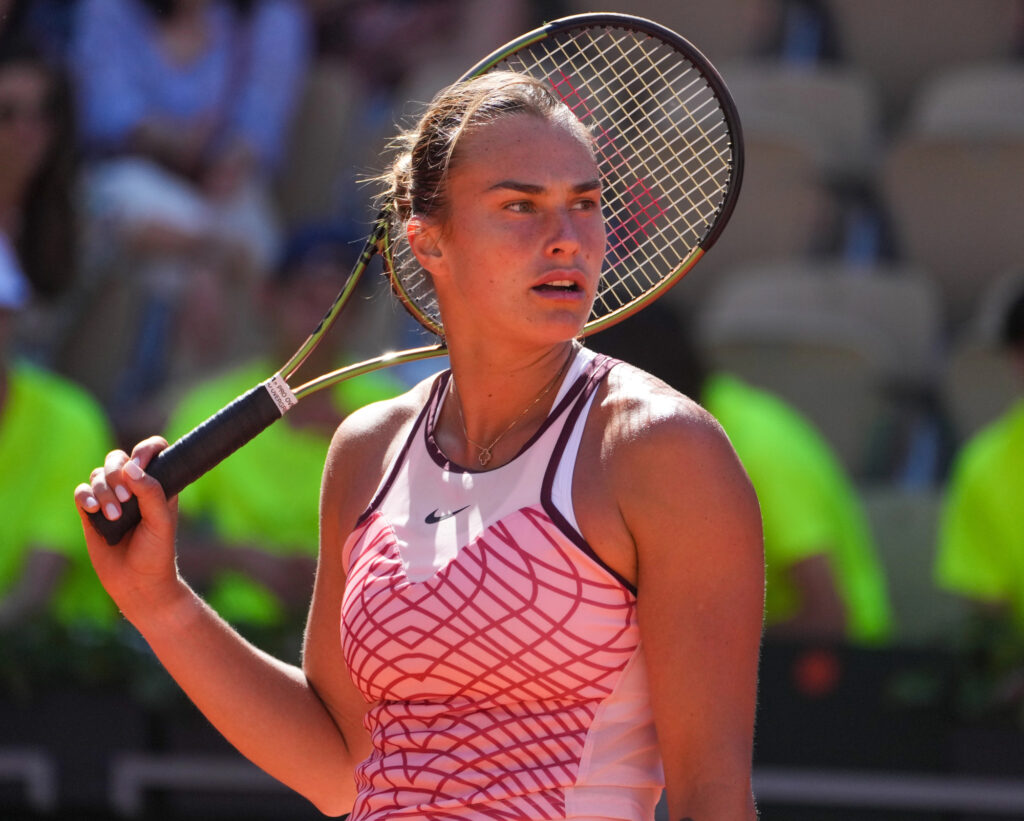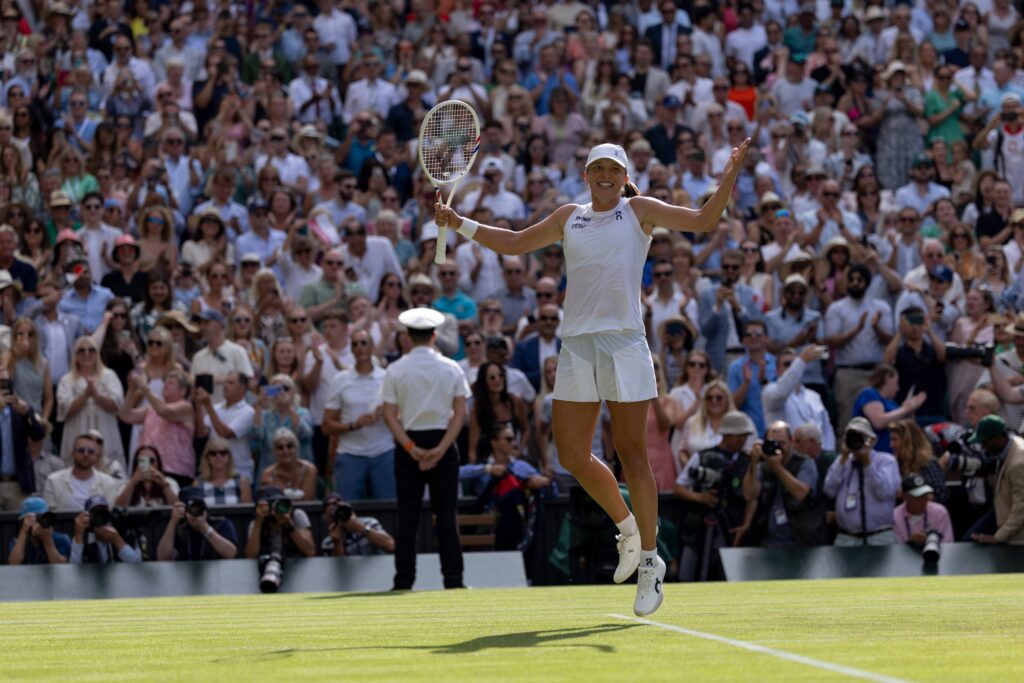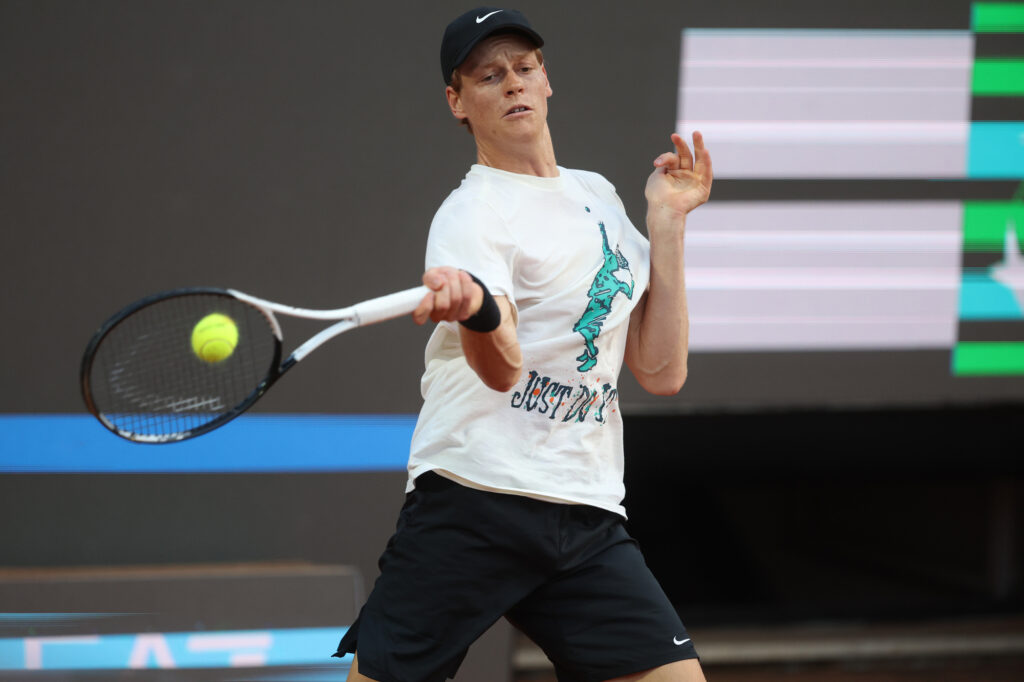“We push each other forward”. Francesco Passaro on the key to Italy’s tennis rise

From clay courts in Perugia to ATP–level wins and a Top 100 debut, the 24–year–old Italian tennis player, in an exclusive interview with Racket One, reflects on long–term coaching, the Challenger grind, and how his country built a system that works.
To begin, a few questions to fill in some biographical gaps. You grew up and started playing tennis in Perugia. Who introduced you to the sport, and what made you take it seriously at a young age?
I started playing tennis when I was six years old in Perugia, because I lived right between two sports clubs: Junior Tennis Perugia, where I later grew up, and the Don Bosco football club. From the lower gate I could enter the tennis club, and from the upper gate I could get straight to the football field. In the end, though, I spent most of my days playing tennis.
Even as a kid, I showed a bit of talent. My coach, Roberto Tarpani, who has been with me from the beginning, saw potential in me right away. So around the age of 13 or 14, we decided to take a more professional path.
I would also train two mornings a week with older players, always with the idea that one day I might try to become a professional. Roberto believed in me a lot, and so did my parents – that gave us the push to keep going.
Around age 16, I started getting some national results: I was called up for a few camps and took part in training sessions organized by the Italian Tennis Federation (FITP). That’s also when I started playing Tennis Europe Under‑18 tournaments.
At 18, we moved on to the ITF junior circuit. I reached No. 32 in the world rankings, played all the Grand Slams, and from that point on, I started to understand more clearly that maybe I really could become a professional player.
For readers across Europe, it would be interesting to know what Perugia was like when you were growing up – how popular was tennis back then? And have you noticed any changes in the local tennis infrastructure in recent years?
Perugia is a small city, and the Umbria region in general hasn’t produced many top–level tennis players. But over the years, I’ve seen a lot of growth. Today, many more kids are picking up the sport, and the local infrastructure has definitely improved.
We’ve seen the addition of indoor courts and, importantly, some hard courts too – because when I was starting out, we played almost exclusively on clay. Clay is still the dominant surface here, but local clubs have made a real effort to upgrade their facilities and offer more variety. That helps young players develop a more complete game and gives the region a better chance of producing future top–level talent.
You’ve built a long–standing coaching relationship with Roberto Tarpani since the age of ten – something quite rare on tour today. What has helped make that partnership so durable and effective?
My relationship with Roberto Tarpani goes back more than ten years. He was also my godfather for both my First Communion and Confirmation, so he’s almost like a second father to me – or an older brother. He’s always believed in me deeply, and in fact, a big part of the credit for where I am today goes to him.
He’s constantly pushed me to grow, both as a player and as a person. Our relationship is built on mutual respect and a shared drive to keep improving and chasing new goals. And to be honest, we’ve probably already achieved more than either of us expected when we started out.

It’s not easy to find that kind of connection in tennis nowadays. People often don’t put much faith in coaches from small local clubs – but we did. He saw something in me from the beginning and carved out a big part of his own life to help me chase this dream. I’m truly grateful for that. We’ve shared a lot of great moments along the way.
You’re often seen as one of the leaders on the Italian Challenger Tour, with three titles in Italy – Trieste (2022), Turin and Genoa (2024) – and several finals appearances. Which of those wins felt like a real turning point in your career?
Winning the Challenger in Turin (Piemonte Open 2024), right after a strong week at the Rome Masters 1000, really felt like a personal restart. I had a big season in 2022 with five finals, including Trieste, but those two weeks reminded me that I can still play – and win – at a very high level.
Turin was a special tournament: I beat five top–100 players in a row, including Sonego in the semifinals and Musetti in the final, 6–3, 7–5. It honestly felt like a dream week – I was playing confident, aggressive tennis from start to finish.
That title was a real confirmation for me. It proved that I belong at that level. And the fact that all three of my Challenger titles have come on home soil makes it even more meaningful. Winning in Italy always carries extra emotion.
The Challenger Tour is known for being both incredibly competitive and mentally demanding. What makes it such a tough environment, and what were the biggest challenges for you when trying to make the leap to the ATP Tour?
The hardest part about moving from the Challenger Tour to the ATP level is breaking through the top 100 and getting into the top 90. That’s when you start getting regular access to ATP tournaments, where even winning one or two matches can earn you a lot more points compared to Challengers.
The ATP point system is more generous – even partial results help you climb. In Challengers, the level is often extremely high – sometimes comparable to an ATP 250 – but with far fewer points available. That makes it harder to move up, and it can be mentally tough when you’re putting in so much effort without immediate progress.
The Challenger Tour itself is incredibly competitive – really tough. But at the same time, it’s a kind of school: it either helps you grow or it breaks you. Everyone is hungry to move up, to collect points. There’s so much depth and parity – every week you see a different winner – and only the players who go deep earn real points. So if you’re not making finals or titles, it’s hard to make progress. I have to say, it’s a really demanding environment.
At the 2025 Australian Open, you entered the main draw as a lucky loser, reached the second round, and later made the third round at your home Masters in Rome – a big step forward in terms of results and exposure. What did those breakthroughs bring you in terms of confidence, experience, or even off–court opportunities like financial security or sponsor interest?
Reaching the second round at the Australian Open as a lucky loser, and then making the third round in Rome, were two big confirmations of the level I can play at. They showed me that I have what it takes to be a stable presence on the ATP Tour. Of course, what I’m still missing is consistency – but the level is there, and that gives me confidence, awareness, and motivation to keep pushing for these kinds of results on a more regular basis.
Those two weeks – between Melbourne and Rome – also gave me a bit more visibility in Italy. But nowadays, with so many strong young players coming through in our country, it’s not easy to stand out. A lot of guys are achieving incredible things. Still, I’m proud of what I’ve done so far. Making the third round in Rome was really special – it’s my favorite tournament, and having that kind of run there meant a lot to me.
What did breaking into the Top 100 mean to you personally? Has it changed the way you approach tournaments or how you plan your season?
Breaking into the top 100 was the realization of a small dream for me. It was a goal I had been chasing for two or three years, and at times it actually held me back a bit – I started thinking only about ranking points, and that mindset created some mental obstacles.
But when I finally made it, it felt like a weight had been lifted. I had more confidence in myself, more awareness of my game. And yes, entering the top 100 in January definitely gave me the push to approach the following three or four months with a different mindset and a new kind of planning.
Unfortunately, I got injured during my first ATP tournaments in South America – it could have been a great opportunity to earn points. Instead, I had to stop for almost three months. That was a mentally tough stretch, too.
Can you tell us more about your team – which roles have been added or strengthened over the past few years, and what responsibilities do you still manage on your own?
My team obviously started with Roberto Tarpani on the technical side. But over the last three or four years, the federation has really supported us by bringing in Mosè Navarra – a former junior world No. 1 and now a national coach, who has worked with players like Berrettini, Quinzi, Napolitano, and Donati. Since joining our team, he’s been a huge asset.
As for fitness, I worked for years with a federation coach. Last season I went back to training with someone who had followed me when I was a kid. This year, I started working with Davide Cortellazzo – a young and highly motivated physical trainer who really believes in my project and is eager to grow alongside me.
We also have support from Giacomo Remondina, a strength and conditioning coach appointed by the Italian Tennis Federation (FITP) and part of the official technical team. For physio work, I’m currently followed by Giacomo Naldi, who joined my team in 2025. We started working together this year and things are going well.
On the mental side, I’ve been working with psychologist Rinaldo Pasqua for six years now. And this year, I’ve also added Nicoletta Romanazzi, a top–level mental coach who has worked with athletes like Marcell Jacobs (Olympic gold in the 100 meters – Racket One), Mattia Perin, and Matías Vecino – elite professionals from a range of sports.
I’m also represented by Octagon, with Luca Cozzi helping me on the management side – from sponsorships and logistics to overall career coordination.
You’re part of a strong new wave of Italian players climbing the rankings. In your view, what’s the secret behind the consistency and success of the Italian tennis system?
I don’t think it’s a coincidence that so many young Italian players have been rising in recent years. A lot of credit goes to the work done by the Italian Tennis Federation. They’ve invested much more into youth development, making it easier to access professional figures like coaches, fitness trainers, and – in some tournaments – even physiotherapists.
Beyond financial support, I think the most important factor has been the increase in tournaments held in Italy: more Challengers, more ITFs, more chances to gain high–level experience at a young age. That helps players grow faster, without needing to travel far or wait years to compete internationally.
Then there’s also something between us players – a kind of healthy competition. When we see another Italian getting good results, it naturally makes us think, “I can do that too”. And that creates a positive chain reaction, where we push and motivate each other forward. For me, that’s really the key.
Cover photo: Francesco Passaro during a practice session at Roland Garros. Photo credit: Octagon.




